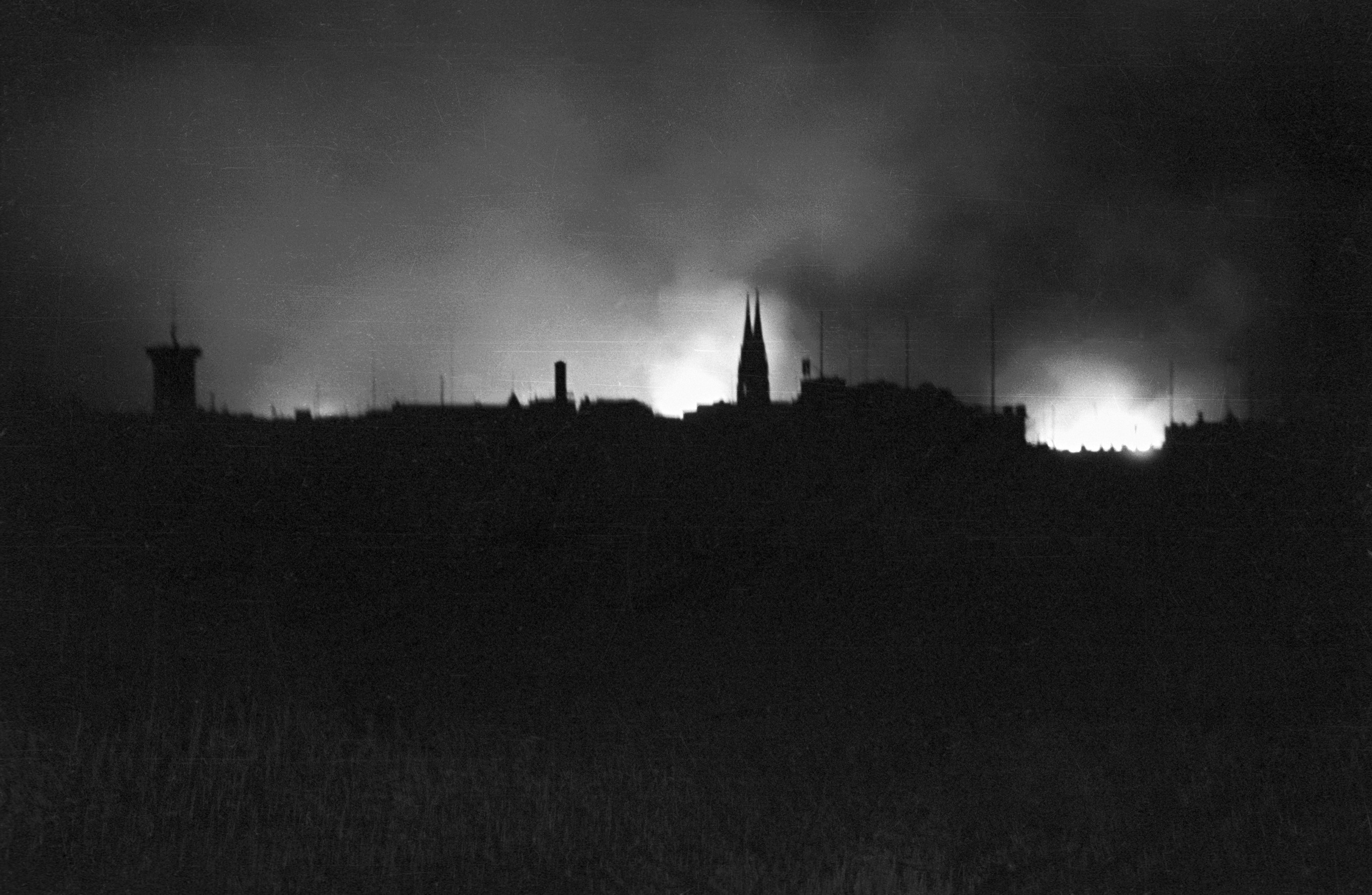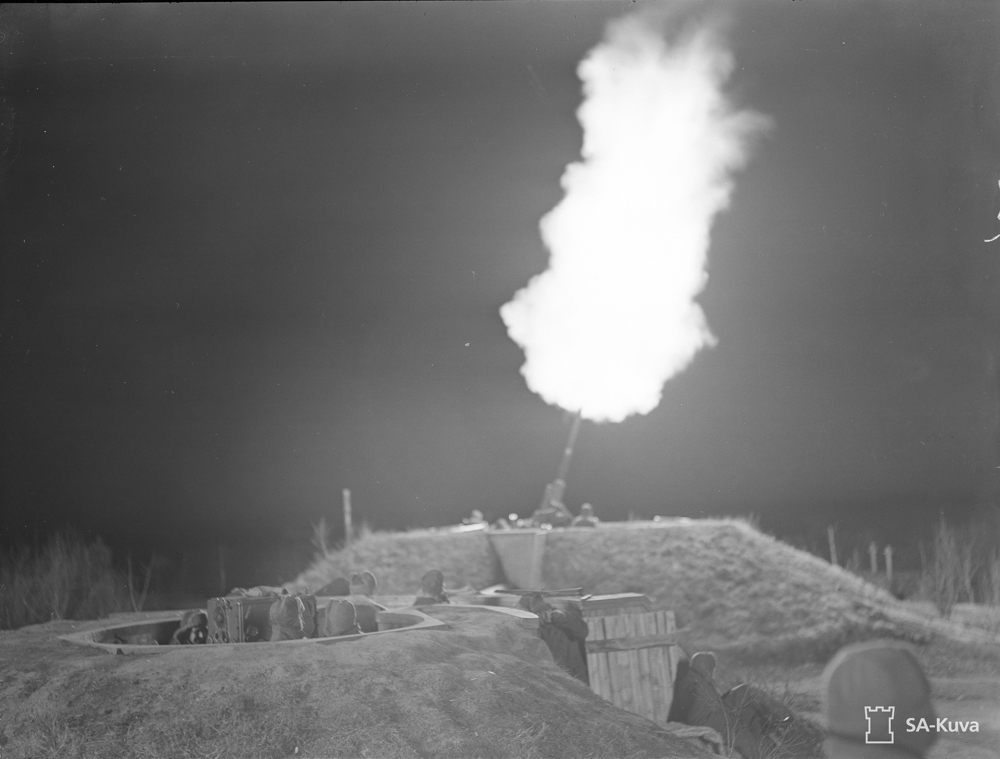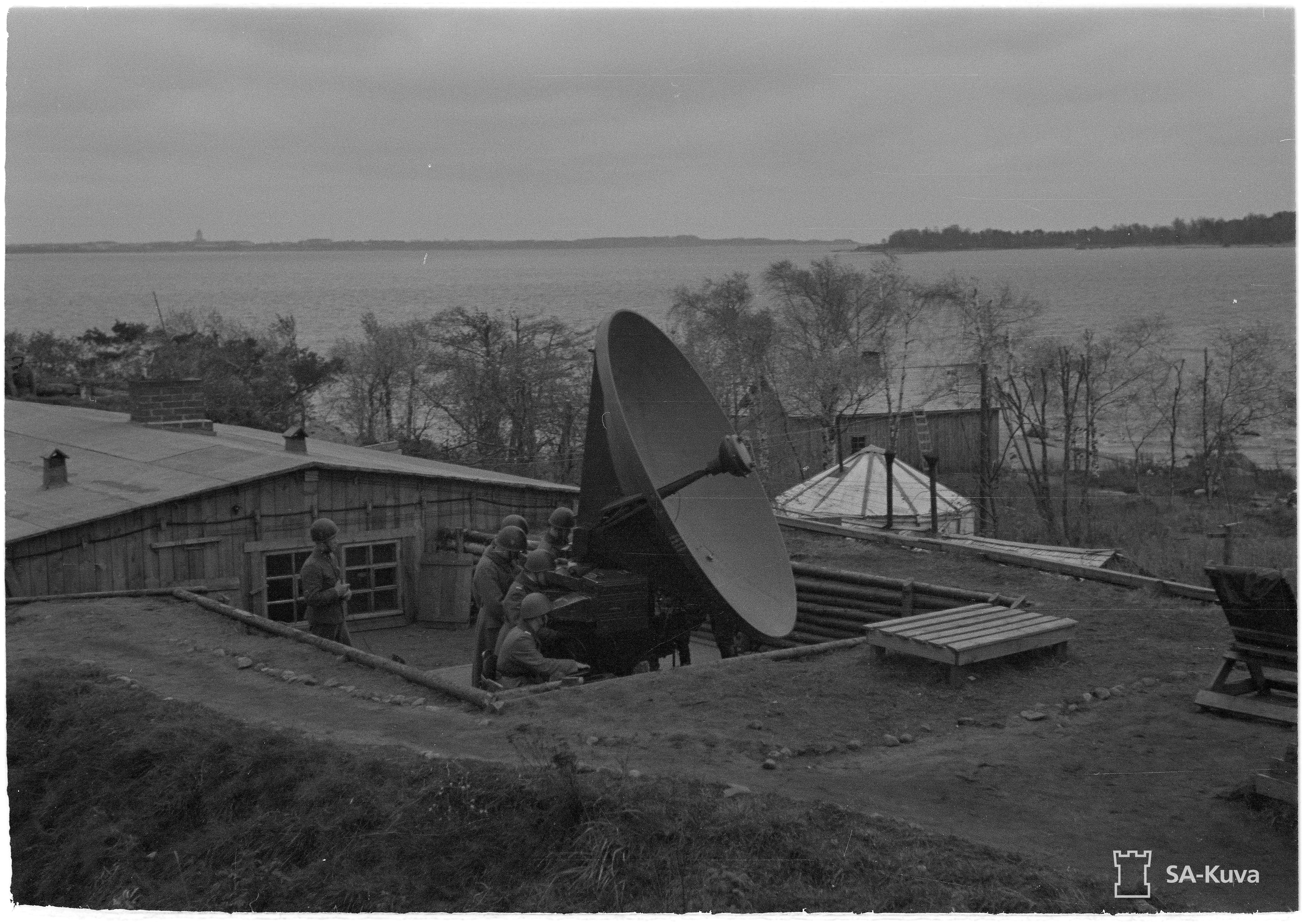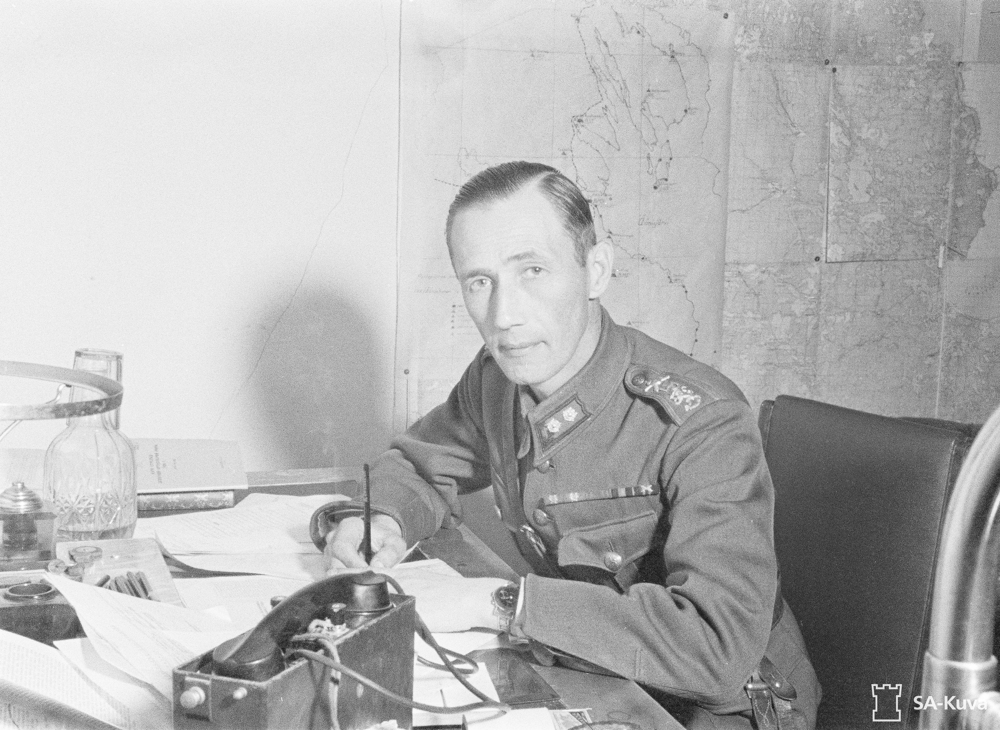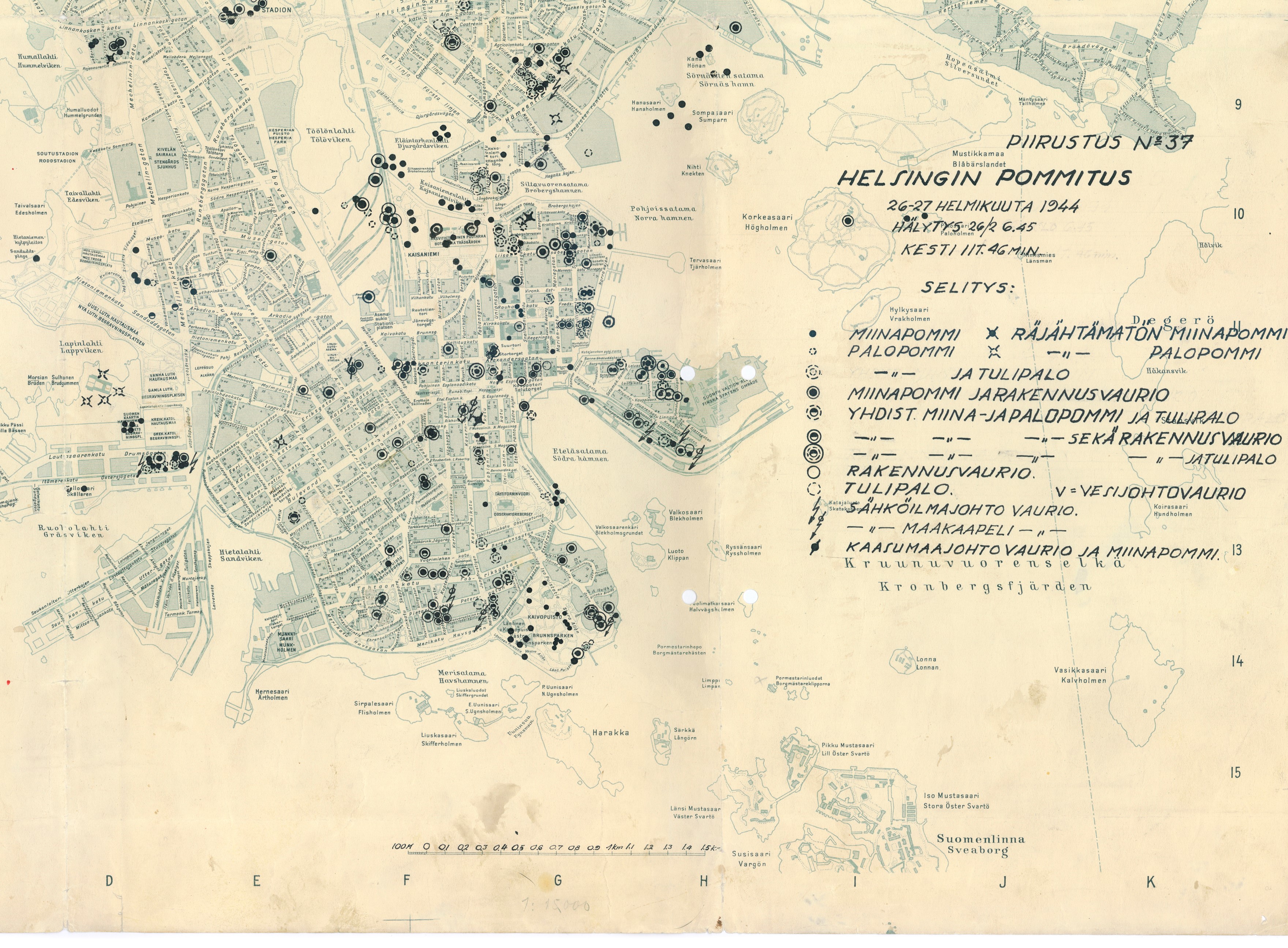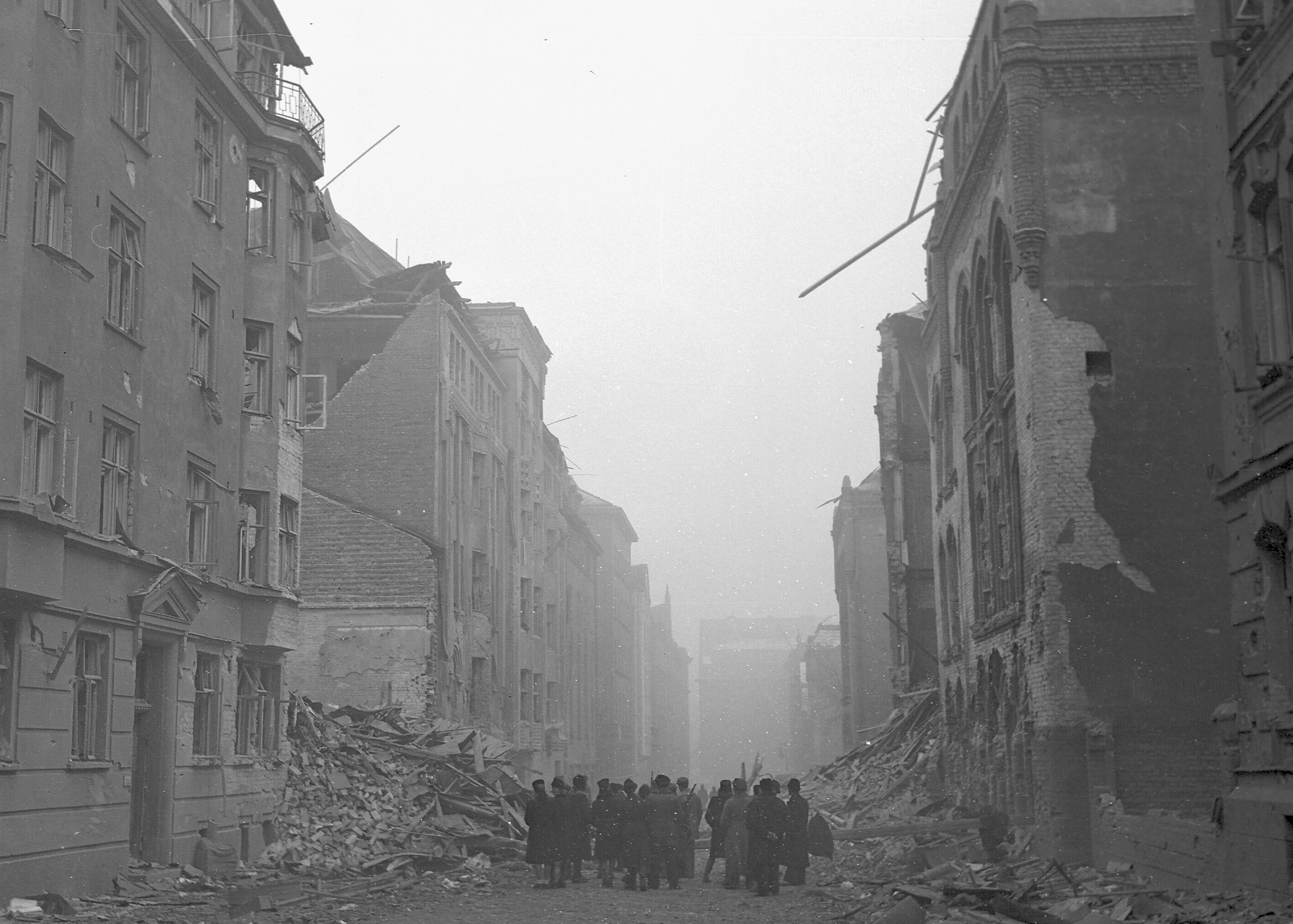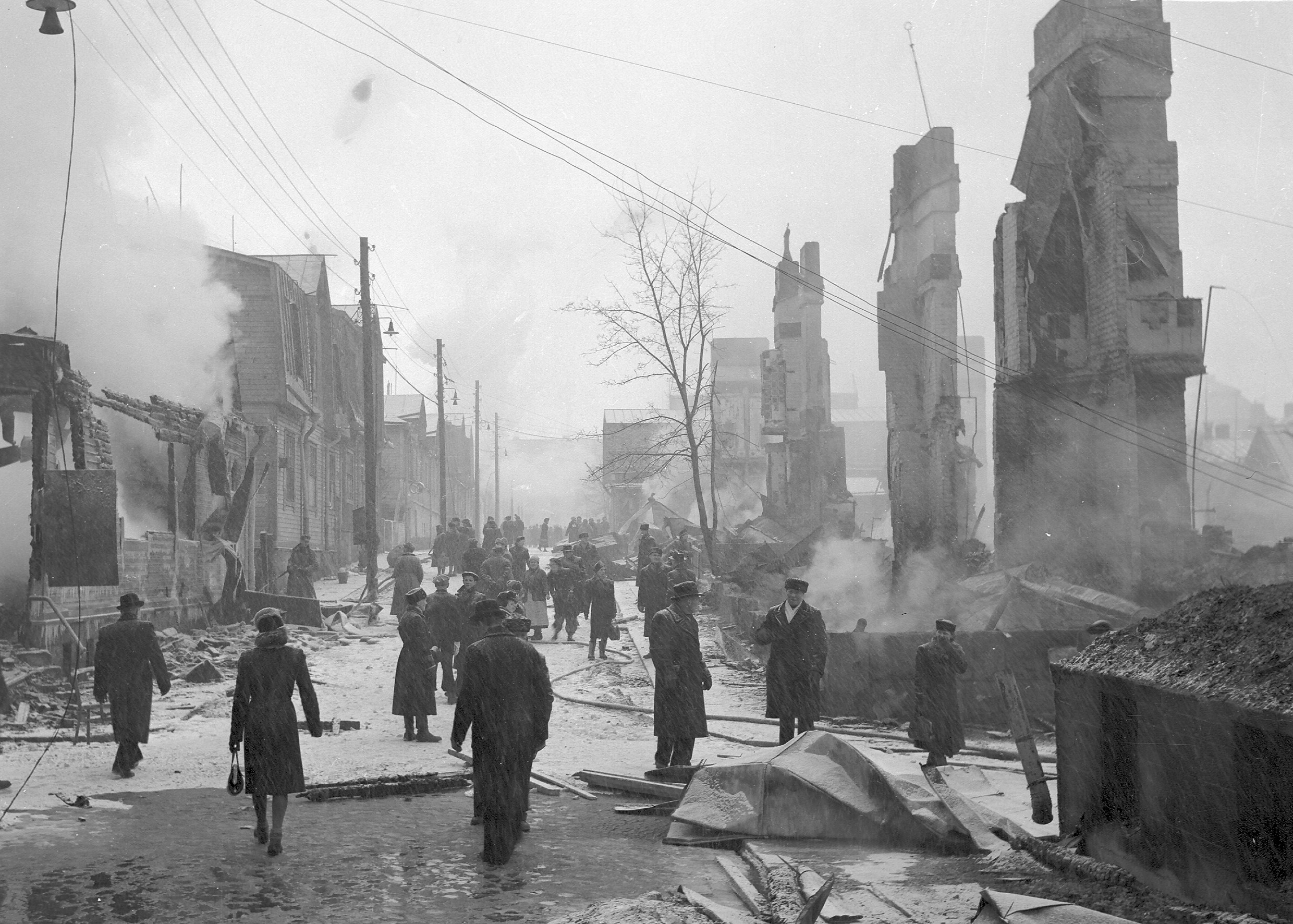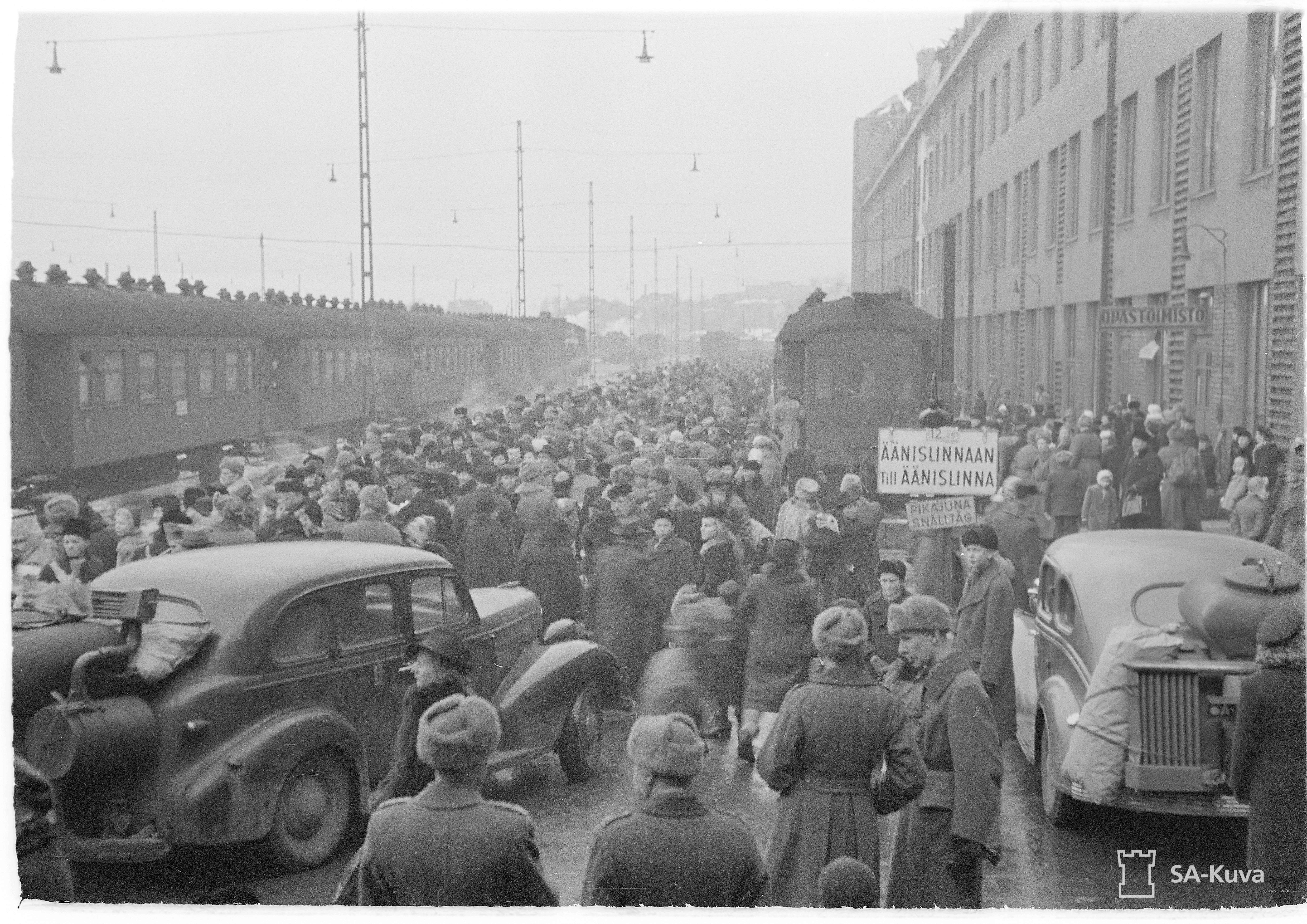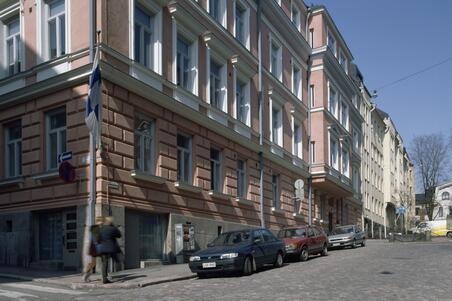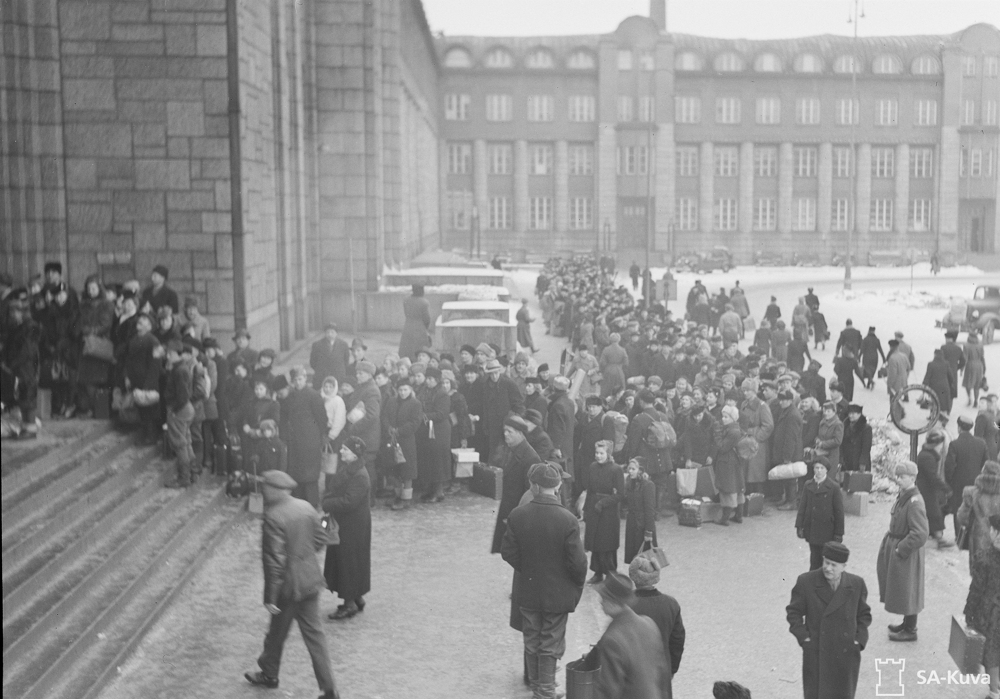Helsinki's air defence succeeded in its mission –– at least if one compares the outcome to the bombings of other cities across Europe. People were certainly killed and wounded in the bombings, buildings were destroyed and damaged, but the destruction would have been many times greater had the air defence failed.
1st Anti-Aircraft Regiment bore the greatest responsibility for the defence of the capital city. Furthermore, the city's air defence was joined by members of the Finnish White Guard, volunteer women, and young soldiers. Thanks to them, Helsinki was spared from worse destruction.
Watch
The main building of the University of Helsinki was badly damaged on thebombings in the night from 26 to 27 February 1944.
Finlandia Survey No 57 on Elonet.finna.fi (video)(Link leads to external service)
During the Continuation War, leadership at the highest levels of the Finnish military paid increasing attention to the defence of Helsinki. The fate of a capital is always important to the entire nation. Recent examples around the world included the bombings of London, Berlin, Moscow, Bucharest, and Tokyo.
In Autumn 1942, the enemy began conducting aerial night raids on Helsinki, thus exposing to Finland’s leaders their inability to detect and defend against such attacks. Finnish air defence was not equipped to operate in the dark. It was not possible to produce sufficiently accurate target points with the available sound locators and searchlights.
The need to strengthen defence efforts was also accelerated by the surprise bombing that took place in the middle of the day on November 8, 1942, with one bomb killing 51 people. As a result of these events, efforts were begun to acquire radar and artillery equipment from Germany. At the same time, with the new 88 mm RMB anti-aircraft guns, also sourced from Germany, defence was substantially enhanced.
Helsinki's air defence in February 1944
At the beginning of February 1944, Helsinki's air defence consisted of anti-aircraft forces, the Finnish Air Force's fighter squadron, and the German Air Force's night-flying squadron, which arrived in Helsinki’s Malmi airport in the middle of the month.
Air defence was of great importance during the attacks in reducing losses and repairing damage. Air defence troops, fire brigades, medical personnel, and the police all succeeded in their tasks.
Helsinki’s Air Defence Centre Torni
The nickname "Torni" (“Tower”) was used for the site from which Helsinki's air defence was operated.
The anti-aircraft battery weapons, probes, searchlights, and sound mirrors, as well as night fighters were in centralised use to fight enemy air attacks. Torni also played a key role in honing cooperation based on the experiences gained from the enemy's air forces even between bombing runs. Several barrage fire exercises were conducted, and the tower also served other ends, such as to develop cooperation between night fighters and searchlights.
Helsinki's air raid protection centre was originally established in the premises of the Olympic Stadium. The centre was nicknamed "The Tower" after the stadium's tower.
In early 1944, the protection centre’s personnel included 4 officers, 8 non-commissioned officers, 1 cannoneer, 2 female volunteers, and a messenger.
1st Anti-Aircraft Regiment
- 4,600 people strong, more than 100 of which were women and more than 200 underage soldiers
- Headquarters, protection centre, and storage unit
- Two air surveillance radars for signal units (code-named “Raija")
- Four heavy anti-aircraft batteries: 13-15 heavy anti-aircraft batteries and 77 heavy anti-aircraft cannons (75-88mm)
- Four fire control radars (code-named “Irja")
- One light anti-aircraft battery
- Ten divisions and six air defence machine gun teams
- A total of 41 anti-aircraft cannons (20-40mm)
- Searchlight battery: 4 searchlight batteries, 36 searchlights and 13 sound mirrors
- In addition, three coastal anti-aircraft batteries on the islands outside Helsinki (under the command of the regiment in terms of defence)
- From 12 February 1944, naval ships also featured anti-aircraft weapons in support of defence, 12 pcs.
Pekka Jokipaltio (1901–77)
Lieutenant-Colonel Pekka Jokipaltio was assigned as the commander of the 1st Anti-Aircraft Regiment on 12 March 1943.
As the regiment's commander, Jokipaltio played a very central role in honing Helsinki's air defence from many organisations and actors into one entity, which became an effectively functioning "combat orchestra" during the fiercest moments of the war. The regiment had just undergone a major organisational reform and acquired significant reinforcements of equipment. There was, as such, a great deal to do.
Barrage fire and annihilation fire
The goal of barrage fire was to launch an "explosive firewall" in front of an attacking plane with as many cannons as possible, the purpose of which was to prevent the attacker from entering the bomb-dropping area with a deterrent effect. In annihilation fire, the aim was to use accurate target measurement data to land a devastating hit on the attacking aircraft.
Radars played a central role in the success of defence, and in saving Helsinki from major destruction.
The efficacy of the barrage method was proven in 1944 when it was successfully deployed to prevent heavy bombing in Helsinki. The majority of enemy pilots were frightened by the wall of fire bursting in front of them. As a result, incoming planes most often dropped their bombs before entering their intended drop zone and curved away.
Defence achievements
In the operation aimed at Helsinki, a total of around 16,500 bombs of various sizes were dropped. About 670 of the dropped bombs hit the area of Helsinki and about 130 hit adjacent areas. Only 530 bombs hit the inner city. From this it can be concluded that the air defence managed to repel more than 95% of the bombs.
The targets determined by the ADD were hit by less than 100 bombs, i.e. less than one percent of the entire bomb load. According to certain statistics, 52% of the bombs fell on the east-southeast side of the city, which was the direction of gravity. 16% fell on the south side, 21% on the north side, and only 4% on the west side. The main part of the bomb load went into the sea.
German fighters, operating from the Malmi airfield, also participated in the fight against the second and third heavy bombing.
Comparing the damage caused by the major bombings in Helsinki to that caused by the bombings of other cities in Europe, Helsinki survived with relatively less.
The first defence victory of 1944 was achieved on home territory. In the 1st Anti-Aircraft Regiment's order of the day no. 11/28/2/1944, the air force commander's telephone message was published: “Marshal Mannerheim of Finland has today ordered me to convey his recognition and thanks to the officers, non-commissioned officers, and crew who participated in the anti-aircraft defence of Helsinki for their exemplary activities."
After the bombings
After the third night of bombings, the Soviet military leadership must have concluded that they had succeeded in their goal of destroying Helsinki and the city was not bombed again after February. Among other things, this conclusion was influenced by information fed through the Swedish press about the "complete destruction of the capital of Finland" and a desant whom the Finns had captured and persuaded to cooperate by conveying the same message to Moscow.
After the attacks, aerial photography of the target by the Red Army was obstructed by darkness and smoke from the fires.
For the Russian members of the Allied Control Commission, the relatively minor damage to Helsinki in the fall of 1944 was quite a surprise. When news reached Stalin, he became enraged at the false information previously given, which resulted in the ADD being "downgraded" to a regular air force on 6 December 1944. Marshal of Aviation Alexander E. Golovanov also fell out of favour.
Hundreds of people lost their homes in air raids
A total of 637 people lost their homes completely, 850 temporarily. Evacuating the population eased the housing situation. There was a fear that the bombings would continue, and a forced evacuation of the population was planned just in case. The calculation concluded that there were still more than 15,500 underage or senior citizens, and sick or incapacitated people in the city who could still be evacuated. Fortunately, the bombings did not continue.
The great air raids against Helsinki in February 1944
The great raids against Helsinki in 1944. The “Three Nights Miracle” exhibition on Soviet air raids and Helsinki's air defence, Virka gallery, Helsinki, 21.2–25.5.2014.
The great air raids against Helsinki in February 1944 and the air defence victory
Helsinki's air defence victory. The documentary film, realised in cooperation with EVTEK University of Applied Sciences, the Finnish Anti-Aircraft Museum Foundation, and the Helsinki Air Defence Regiment.
Source
Helminen, Martti ja Lukander, Aslak: Helsingin suurpommitukset helmikuussa 1944. Helsinki: WSOY, 2004.


